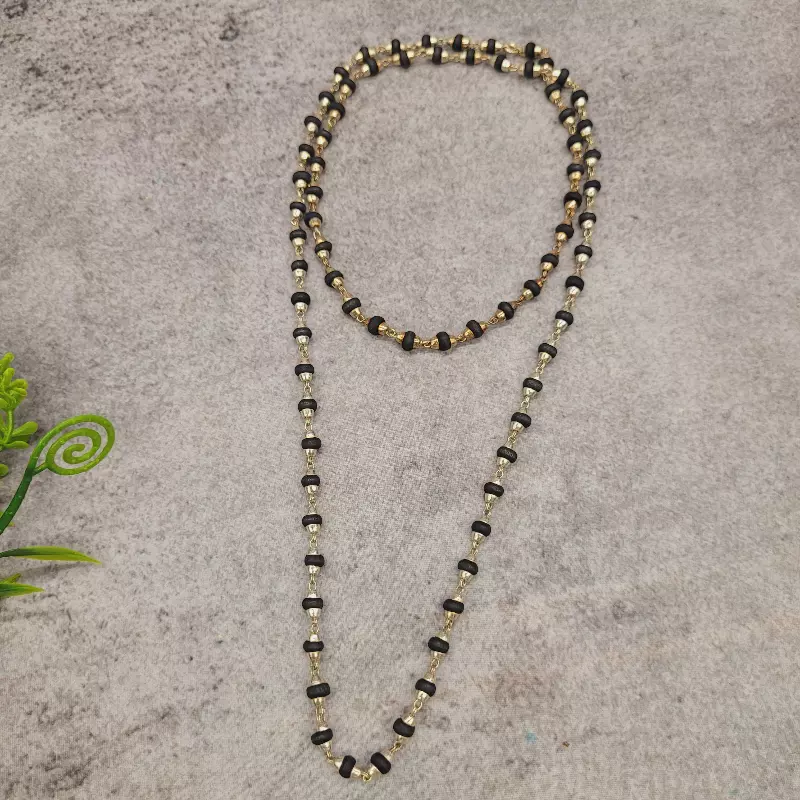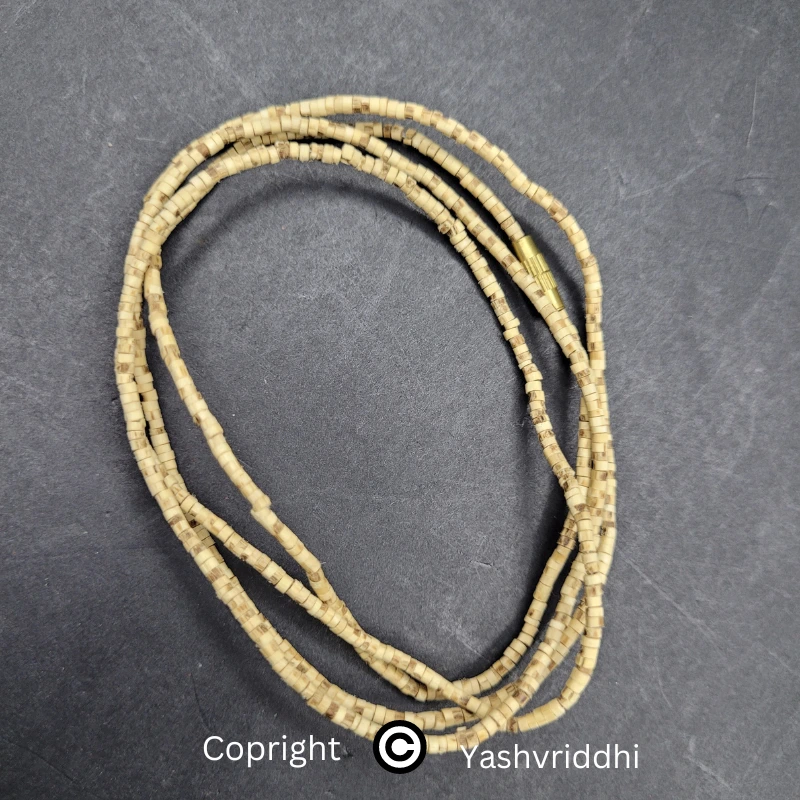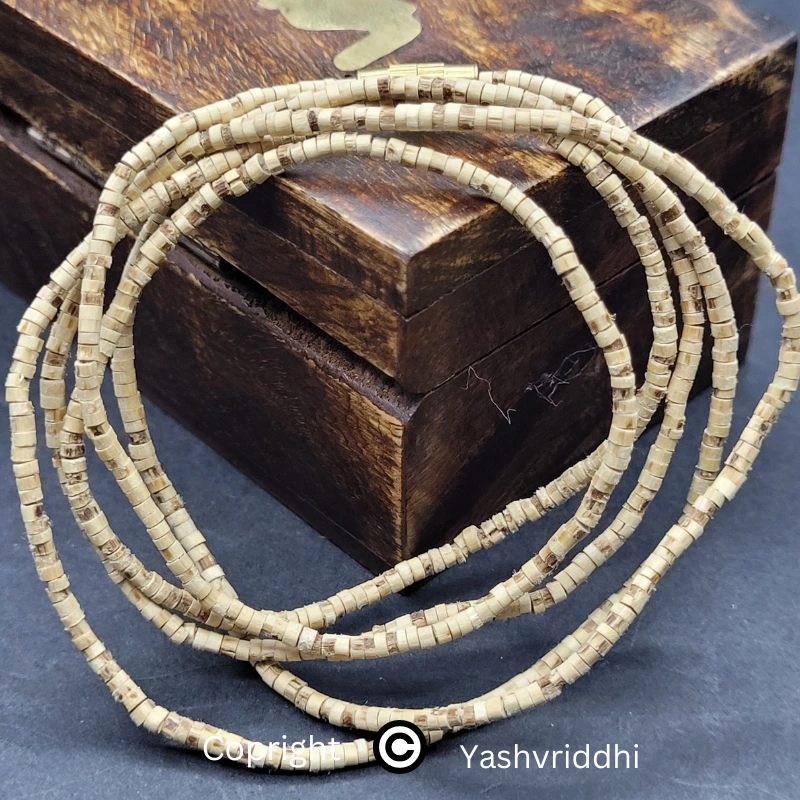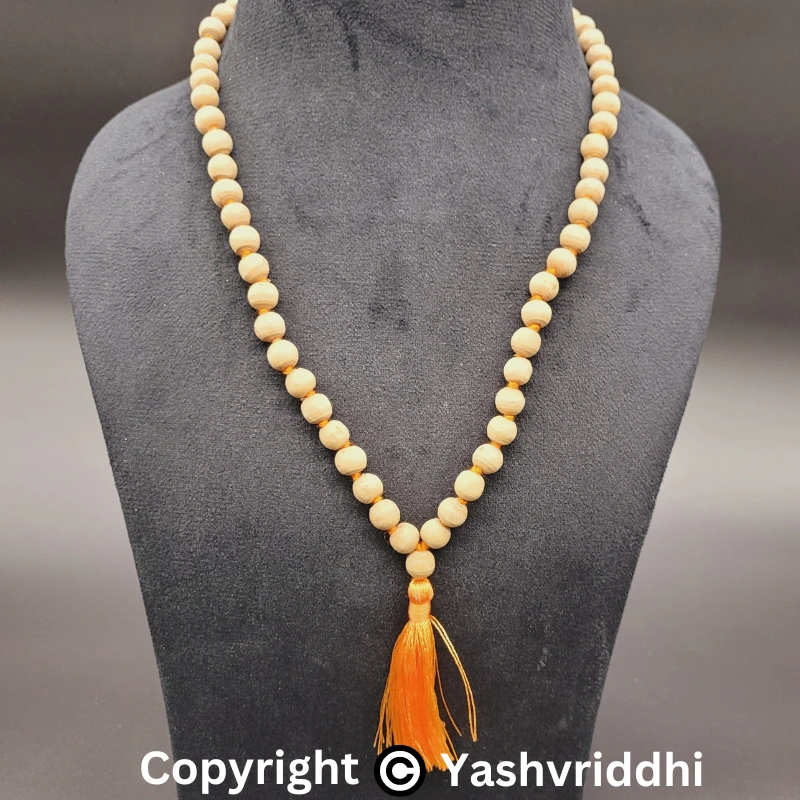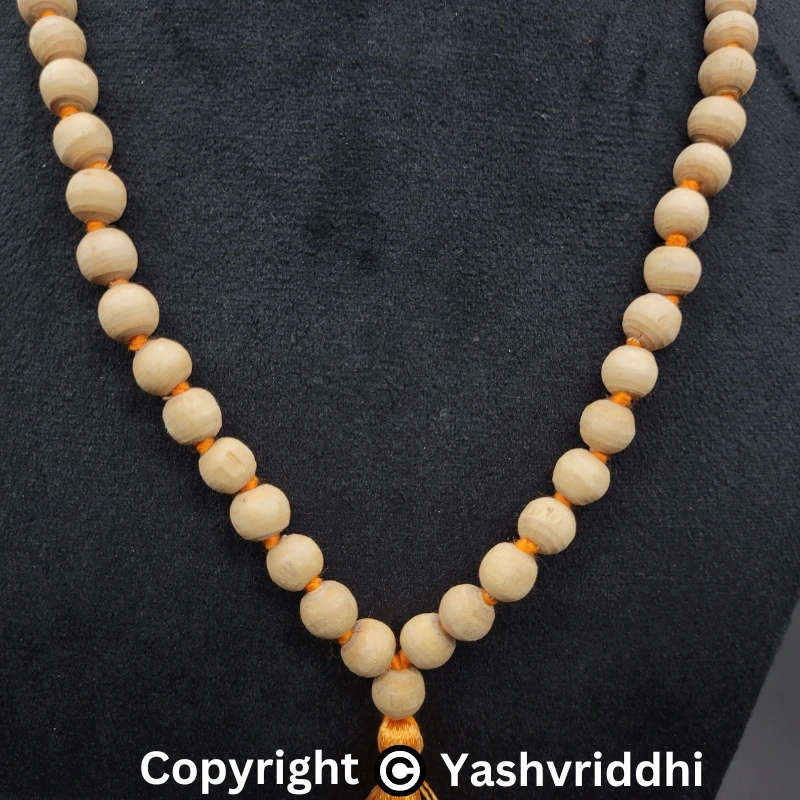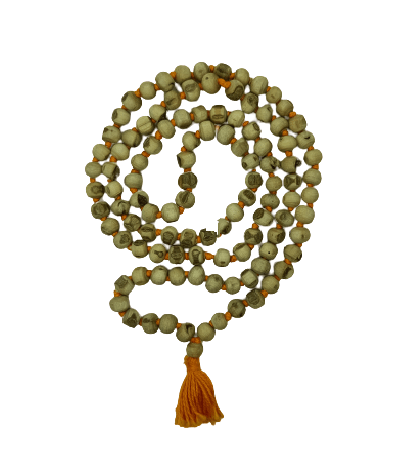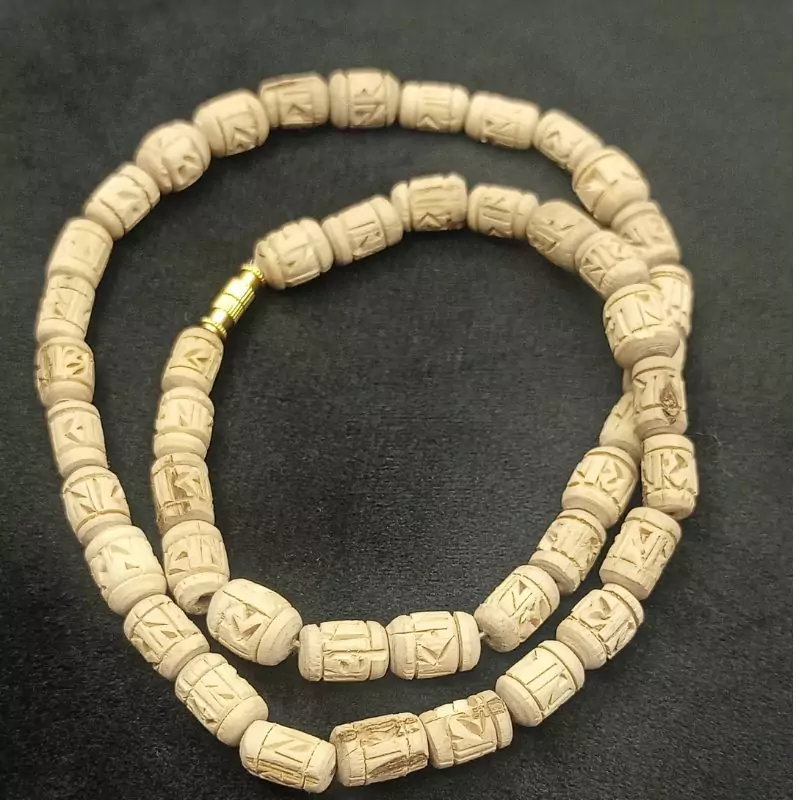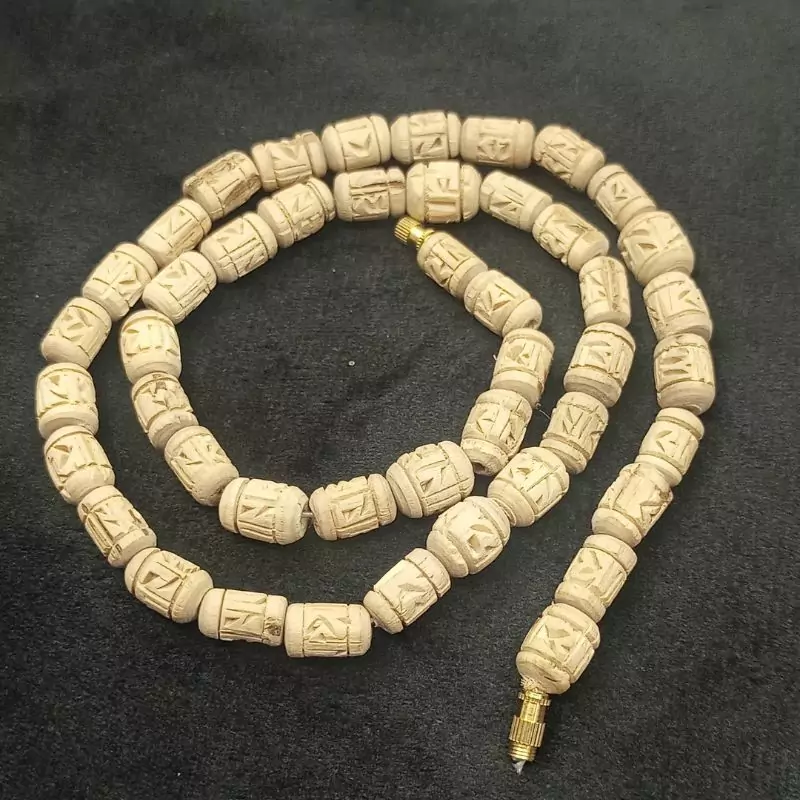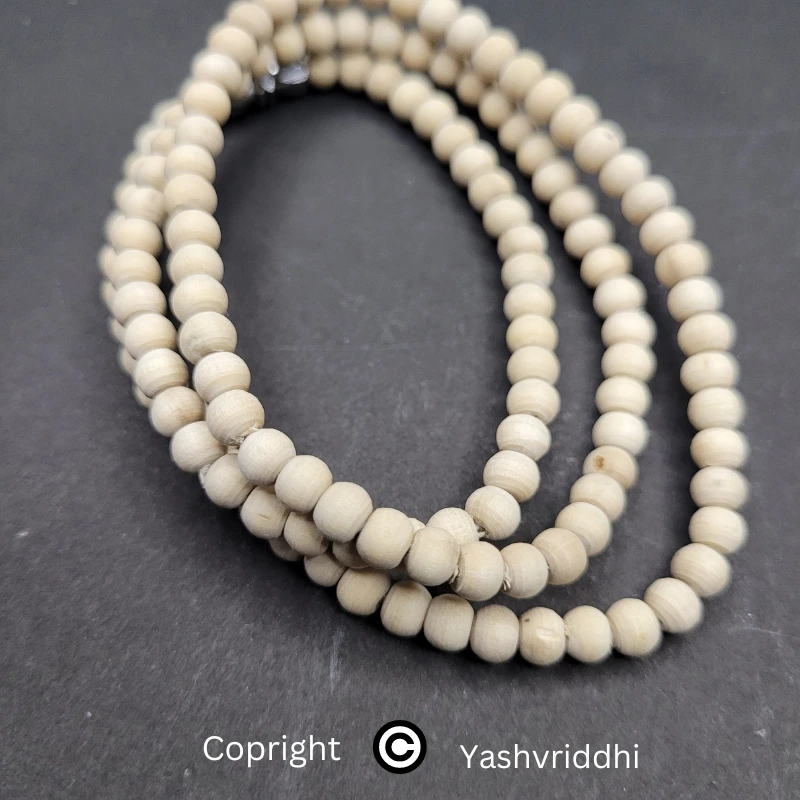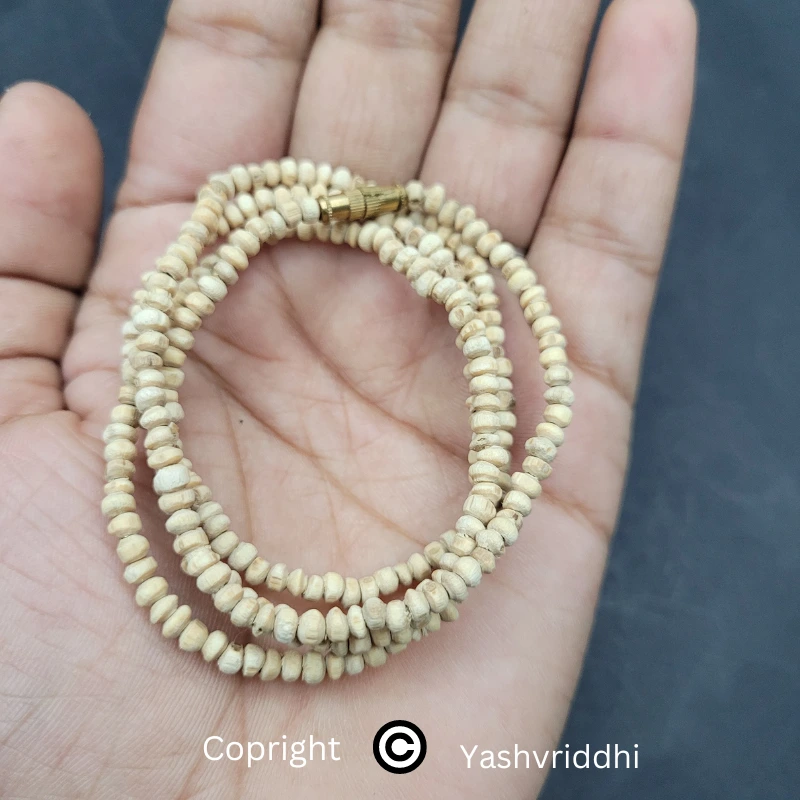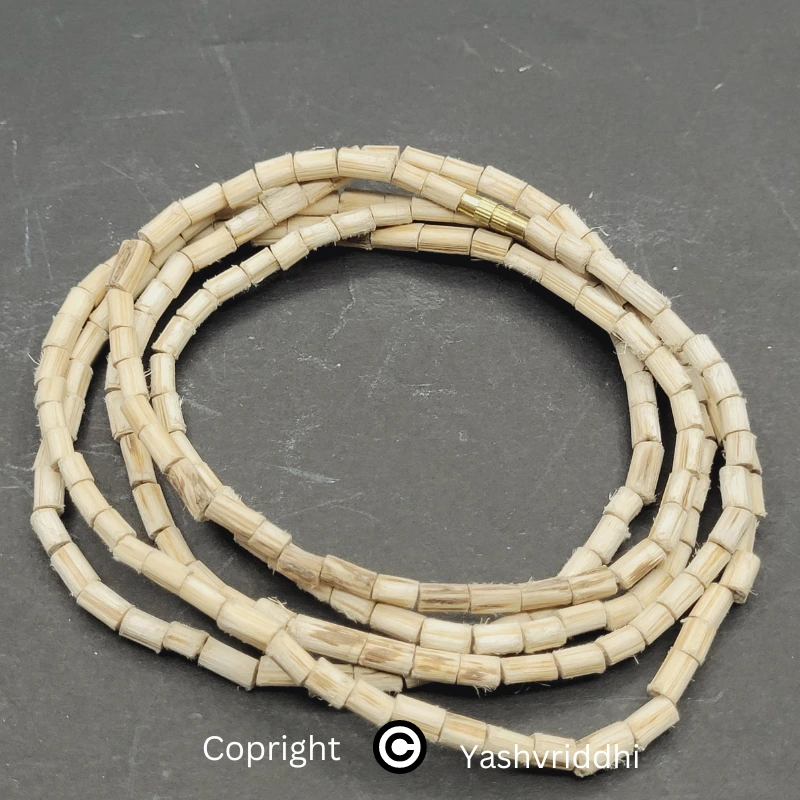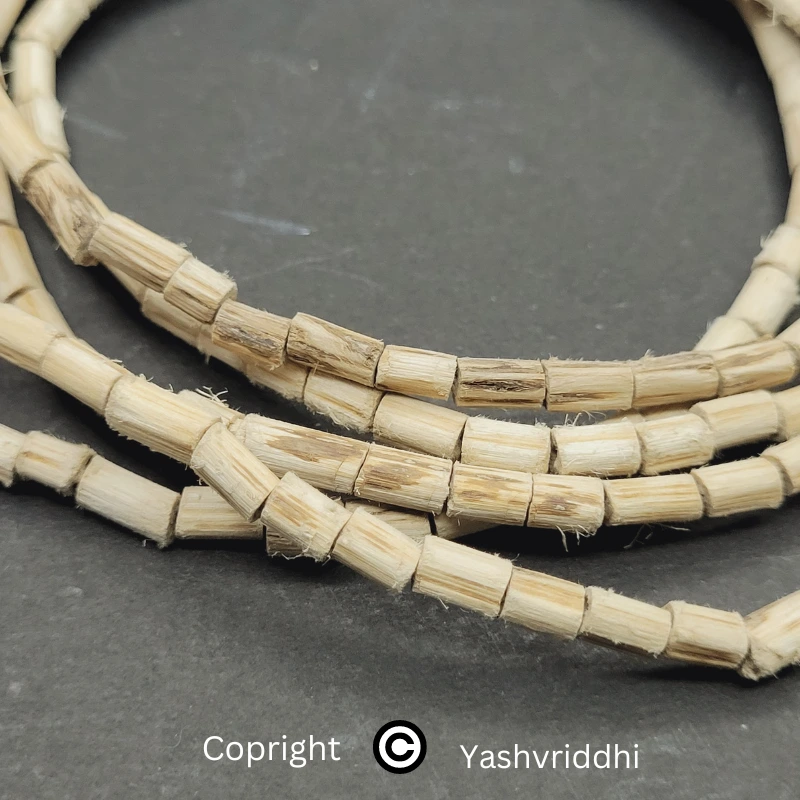Tulsi Mala is a rosary made from the sacred Tulsi plant scientific name (Ocimum tenuiflorum), also known as Holy Basil. In Hinduism, the Tulsi plant is highly revered for its spiritual and medicinal properties. This considered auspicious and is commonly used by devotees in various religious practices and rituals.
Here are some key points about the this:
- Material: The Mala is made by stringing together beads made from the stems of the Tulsi plant. The beads are usually small and spherical.
- Significance: Tulsi is considered a sacred plant in Hinduism, and it is believed to have divine qualities. The use of this Mala is associated with the worship of Lord Vishnu and his incarnations, especially Lord Krishna. It is believed to bring spiritual benefits and protection to the wearer.
- Worship and Meditation: Devotees often use the this Mala for chanting prayers, mantras, or the names of deities during meditation or religious ceremonies. The repetitive counting of beads helps in focusing the mind and maintaining concentration during spiritual practices.
- Healing Properties: Tulsi is also known for its medicinal properties in Ayurveda, the traditional Indian system of medicine. It is believed to have various health benefits, and wearing a this Mala is thought to promote well-being.
- Devotional Practices: Many Hindus believe that wearing a Tulsi Mala can enhance one’s devotion, purify the mind, and bring spiritual blessings.
- Offerings to Deities: Tulsi leaves are commonly offered to Hindu deities during worship. The kanthi Tulsi Mala is considered an extension of this practice, and wearing it is believed to be a form of devotion.
It’s important to note that the use of the Tulsi Mala and its significance may vary among different traditions and sects within Hinduism. Overall, the Tulsi Mala holds a special place in the hearts of devotees who seek spiritual growth and connection through their religious practices.
Showing all 12 results


